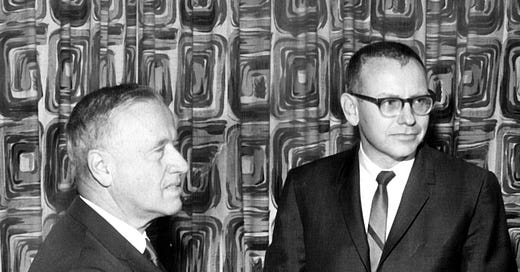National Indemnity
Issue 11| 1967 Part 2 - Berkshire Hathaway acquires National Indemnity for $8.6 million.
Welcome to Issue 11, where we delve into the transformative 1967 acquisition of National Indemnity (NICO) by Berkshire Hathaway for $8.6 million. This pivotal move marked Berkshire's strategic shift from its struggling textile operations, which Warren Buffett was actively shrinking due to mounting costs and competition. The acquisition was fundamentally…
Keep reading with a 7-day free trial
Subscribe to Becoming Berkshire to keep reading this post and get 7 days of free access to the full post archives.



